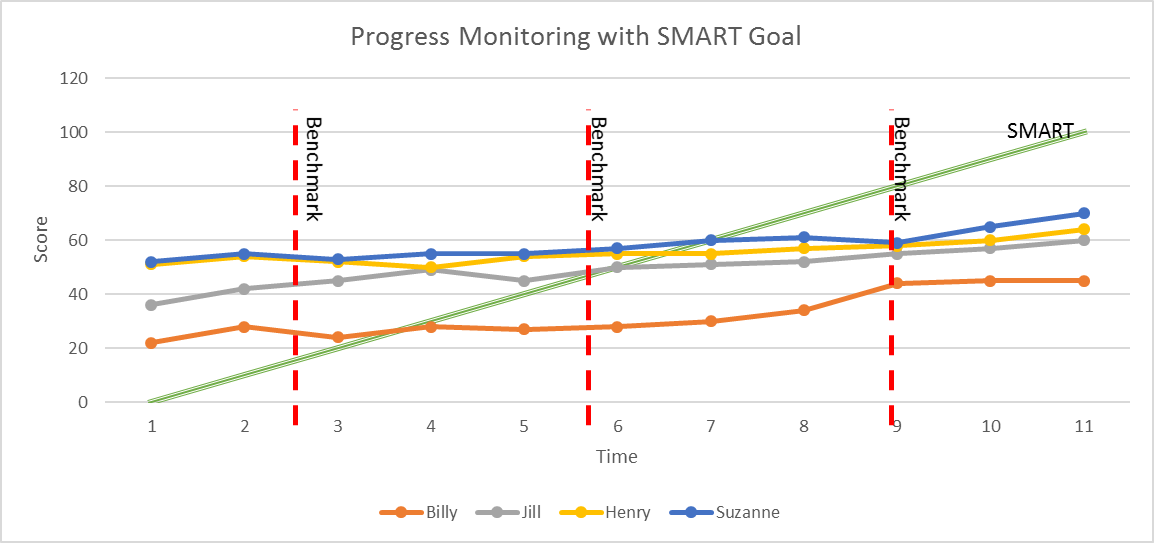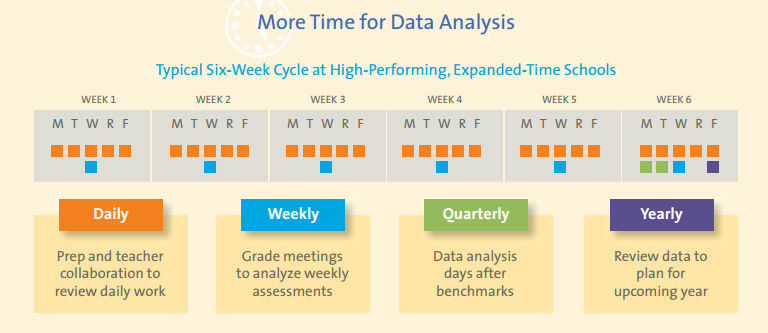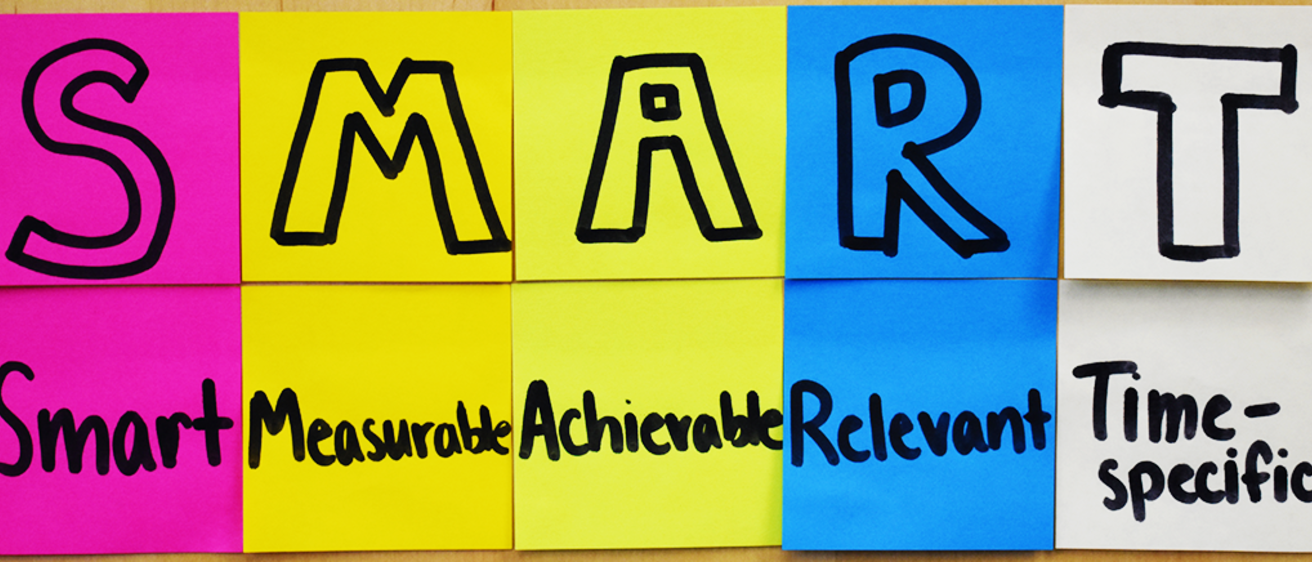1346 words | 7 minute read
Editor’s Note: This is the third in a series of posts related to our newest initiative, Practitioners and Researchers Overcoming Problems of Literacy (PROPeL).
PROPeL teams have worked very hard at collecting and analyzing data to create a challenge statement and to identify the root cause of the challenge. Now that we have a good sense of the literacy challenges affecting alternative schools and juvenile justice facilities, the next step in the PROPeL framework is to create a specific, measurable, achievable, relevant, and time-specific (SMART) goal.
Why Are Goals Important?
Goal setting is critical to the improvement process. By setting a goal, a team is able to:
- Take control of the progress toward improvement
- Understand how the end state will look
- Stay focused on reaching the end
- Be accountable for actions
- Create motivation around the work
When determining an appropriate goal for the work being done in the PROPeL initiative, it is very important that each PROPeL team reference the baseline data it used to define the challenge and identify the root cause of the challenge. The baseline data indicate where the teams are starting, and the root cause informs the team as to how challenging the problem will be to fix. Although teams are encouraged to set a rigorous goal that will improve student literacy performance, it is important that the team write the goal to reflect both where their students currently are performing and what the systems need to do to improve performance. This will help keep the goal realistic.
What Is a SMART Goal?
Defining a SMART goal is a useful process by which teams can clarify their aim and ensure their goal is something they can achieve within a realistic time frame.
SMART Goal Breakdown
Specific: A SMART goal must define exactly what you want to accomplish. For example, “Improve literacy of students with disabilities by 10%,” is a very specific goal. This can be compared to “Improve literacy of students with disabilities,” which is vague and imprecise. For PROPeL, the goal must be about improving student literacy achievement, not adult behaviors.
Measurable: The goal must include a targeted percentage of improvement on a literacy achievement metric.
Achievable: The goal must be realistic and possible to break down into short-term benchmarks.
Relevant: The goal must be related to the previously defined challenge statement and root cause.
Time-Specific: The goal must have a deadline.
Develop Progress Monitoring Benchmarks: Measures to Track Progress Toward Meeting a SMART Goal
You have a SMART goal. So now what? We need benchmarks and methods to track progress toward meeting the SMART goal.
What Are Benchmarks?
Benchmarks are target levels of achievement at specific time points that PROPeL teams may use to determine progress toward meeting their SMART goal. Consider this SMART goal as an example: “By May 30, 2018, students will be able to read and understand multi-syllable words in grade-level text with 80% accuracy or better.” The benchmarks for this goal could include:
- By October 2017, students will be able to break multi-syllable words into their syllables and use the syllable types to identify the words with 80% accuracy or better.
- By January 1, 2018, students will be able to break multi-syllable words into their morphemes (prefixes, roots, and suffixes) and use the morphemes to identify the words with 80% accuracy or better.
- By March 15, 2018, students will be able to read and understand multi-syllable words in slightly below-grade-level text with 80% accuracy or better.
The above set of benchmarks does not show a gradual increase in the percentage of accuracy because the difficulty of the skill students are performing is gradually increased instead. Other SMART goals may lend themselves better to gradual increases in the type of score associated with a particular literacy measure administered at the beginning, middle, and end of the school year. Regardless of the type of measurable improvements, benchmarks provide guideposts for the teacher to monitor individual student progress and ultimately to determine progress toward meeting the SMART goal.
What Is Progress Monitoring?
After developing SMART goals and benchmarks for student performance, PROPeL teams will establish the regular rate of progress (e.g., weekly, every other week, monthly) their students must make to meet the benchmarks and ultimately achieve the SMART goal. In a classroom, progress monitoring is the method by which a teacher determines if students are benefiting from the literacy instruction and research-based practices designed to meet the SMART goal. More importantly, progress monitoring (a) allows teachers to identify those students who are not benefiting from the instruction and (b) provides the opportunity to modify instruction accordingly.
Progress monitoring is different from the routine assessments teachers conduct to determine if a student has mastered the objectives in an instructional unit. It is also different from traditional assessments that are administered to students once per year. Typically, teachers do not receive the results of annual assessments until months later, thereby preventing them from using the results to modify their instruction for struggling students. By contrast, progress monitoring is a form of interim assessment that provides information to inform the ongoing instruction students receive, the resources students use, and the ways in which they are grouped for elements of the literacy lessons.
What are Different Ways to Monitor Progress?
Progress monitoring data can be viewed in two distinct ways:
- As a means to analyze the progress of individual students and identify those in need of more intensive instruction.
- As a means to analyze aggregated class data to determine if current curriculum, interventions, or differentiated instructional strategies are effective for various groups of students with similar demographics or characteristics (e.g., English language learners, students living in poverty, students with disabilities).
The following graph is a visual example of a way to view progress monitoring data. Figure 1 shows a graph monitoring the progress of individual students.
Figure 1. Student Progress Monitoring Over Three Benchmark Periods

How Frequently Should Students Have Their Progress Monitored?
Progress monitoring should be conducted through brief and easily administered methods. This will facilitate it being conducted as frequently as needed to evaluate students’ responsiveness to the instruction so that adjustments can be made in a timely manner. The following figure demonstrates allocating time daily, weekly, quarterly, and yearly to measuring progress. In this example, annual goals are measured quarterly, using data collected daily and weekly.
Figure 3. Allocating Time to Measuring Progress

Source: Louisiana State University Teams Intervening Early to Reach All Students Data Use Framework
Daily monitoring need not be done with a formal test. The work students generate while completing lesson activities can serve as one source of information on their developing abilities. The lessons should be aligned to the literacy skills targeted in the SMART goal, so PROPeL teams can determine the best ways in which to evaluate the students’ work and monitor students’ progress. Similarly, weekly progress monitoring may be more directly tied to classroom work if an appropriate formal assessment is not available. For example, oral reading fluency can be measured weekly in elementary school with a number of different tests such as the FAST Curriculum-Based Measurement for Reading (CBM-R). However, adolescents do not tend to make as rapid progress in fluency, and students of all ages are likely to progress more slowly on overall comprehension measures. Depending upon the skill being targeted, monthly or quarterly progress monitoring may be more reasonable and accurate than weekly progress monitoring.
Track Progress and Celebrate Along the Way
To review, progress monitoring is a series of interim assessments designed to (a) show student progress; (b) identify instructional strategies that are or are not working; and (c) drive individualized instructional decisions. Progress monitoring data also provide an opportunity to celebrate small successes along the way. Data should be displayed so building administrators, teachers, students, and parents easily can see the progress toward meeting the SMART goal. That way, everyone can know the expected outcome of their work, when milestones are reached, and when a little more effort is needed.
